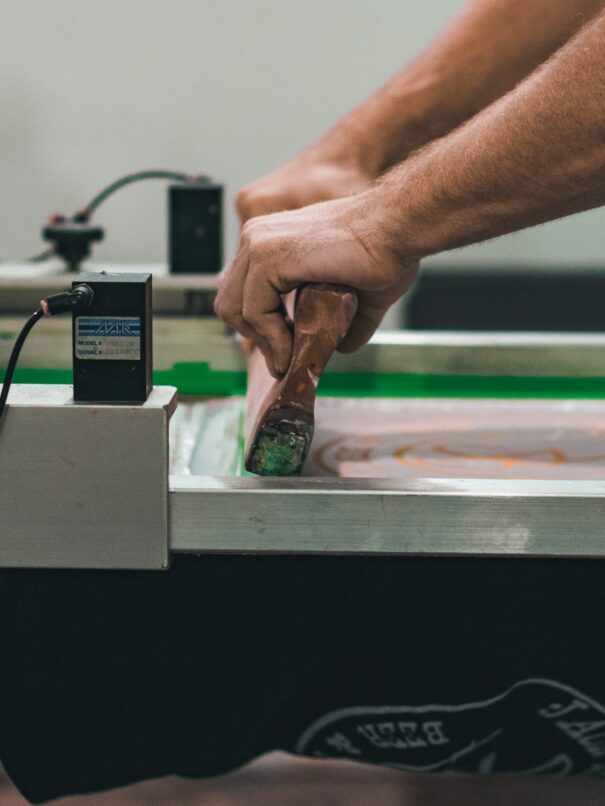At a crucial juncture in its evolution, the fashion industry is increasingly recognizing its substantial environmental footprint, prompting an urgent shift toward more sustainable practices. The integration of technology in this sector is pivotal, playing a transformative role in establishing a circular economy and revolutionizing fashion recycling.
This trend is evident when considering the pressing issue of textile waste; alarming numbers show that China and the United States are responsible for 20M and 17M tons of textile waste per year respectively. This article examines how technology is central to addressing these challenges.
It focuses on the development of sustainable business models and the innovative use of technology in recycling processes, highlighting the potential for a future where waste is converted into value.
We will explore how advancements in recycling technology, supply chain transparency, and consumer engagement are crafting a new narrative in fashion – one that harmonizes style with sustainability and profit with planetary health. By embracing these technological advancements, the fashion industry is not only mitigating its impact on the environment but also charting a course toward a more ethical and economically viable future.
Circular Economy in Fashion: A New Paradigm
The fashion industry is undergoing a transformative shift towards a circular economy, a model that challenges the traditional linear approach of “take, make, dispose.” In circular fashion, the focus is on designing and producing clothes with their eventual reuse or recycling in mind. This paradigm shift is crucial for reducing the industry’s environmental footprint, including greenhouse gas emissions and textile waste. Technology plays a critical role here, enabling the development of innovative business models that support sustainability.
For instance, through advanced materials science, the industry is exploring the use of recycled materials and biodegradable fabrics that align with circular business models. These models emphasize the importance of minimizing waste and maximizing the use of natural resources, positioning the fashion sector as a steward of environmental conservation. The success of the circular economy in fashion hinges on large-scale innovation and collaboration across the supply chain, from raw material sourcing to consumer engagement.
Technology’s Impact on Reducing Textile Waste
Addressing textile waste is a cornerstone of transforming the fashion industry into a more sustainable and circular system. Technological innovations are pivotal in tackling the waste challenge, especially in the context of fast fashion.
Advanced recycling technologies enable the efficient processing of discarded garments, converting waste into valuable resources for new clothing production. These technologies include sophisticated sorting mechanisms that can differentiate fabrics based on their composition, which is crucial for high-quality recycling. Moreover, new chemical recycling methods break down fabrics to their molecular level, offering a solution for recycling blended materials, which are notoriously difficult to process.
This technological approach not only mitigates the impact of textile waste but also contributes to reducing the fashion industry’s carbon footprint. By integrating these technologies into their business models, fashion brands can significantly lessen their environmental impact while maintaining the quality and integrity of their products.
This shift also resonates with the industry demand for a circular economy in sustainable fashion, pushing it towards a more circular fashion economy.
Revolutionizing Business Models in Fashion
In the quest for a circular fashion economy, technology is revolutionizing business models within the fashion industry. Digital platforms have emerged as powerful tools, facilitating clothing rental services and secondhand markets, thereby extending the lifecycle of garments and reducing the need for new clothing production. These models are critical in shifting consumer behavior towards responsible consumption and reducing the reliance on new garments.
Similarly, online platforms for repair services are gaining traction, encouraging consumers to maintain and extend the life of their clothes instead of discarding them. This approach not only combats the waste and pollution associated with fast fashion but also promotes a culture of valuing and caring for possessions. Additionally, advancements in supply chain management software with the help of apparel ERP systems, incorporating AI and data analytics, are all enabling brands to optimize their production processes, reduce excess stock, and lessen their environmental impact.
These innovative business models are essential in creating a circular system within the fashion industry, one that prioritizes sustainability and efficiency while meeting consumer needs.
Reducing Environmental Impact Through Innovation
The integration of technology in a circular fashion is pivotal in reducing the environmental impact of the fashion industry. Innovations in material science are leading to the development of sustainable and recycled materials, which are crucial for reducing the industry’s dependence on raw materials and non-renewable resources. These advancements not only address the issue of textile waste but also contribute to a reduction in resource extraction and landfill waste.
Furthermore, the application of renewable energy sources in production processes is another significant step towards mitigating climate change. The adoption of circular models in fashion also involves the efficient use of resources and the minimization of waste and pollution throughout the value chain. By leveraging technology to create eco-friendly materials and energy-efficient manufacturing processes, the fashion industry can significantly lower its carbon footprint. This shift is essential not only for preserving the natural environment but also for meeting the increasing consumer demand for sustainable fashion.
Moreover, technology-driven innovations like 3D printing and digital fabrication are opening new avenues for creating high-quality, sustainable garments with minimal waste. The combination of these technological advancements presents a powerful opportunity for the fashion sector to operate within a circular system, ensuring that products are kept in use for longer periods, thus aligning with the principles of a circular economy.
Consumer Engagement Through Circular Economy in Fashion
Consumer engagement is a critical component in advancing the circular economy in fashion. Technological innovations are playing a crucial role in transforming consumer attitudes and behaviors towards sustainable and circular fashion practices. Digital platforms and social media are effective tools for educating consumers about the importance of responsible consumption and the environmental benefits of recycling and reusing clothes. Technologies like augmented reality (AR) for virtual try-ons are enhancing the shopping experience, reducing the return rates of online clothing purchases, and thereby decreasing associated waste.
Mobile apps that track the lifecycle of a garment from production to disposal empower consumers to make informed decisions about their purchases, promoting a culture of sustainable fashion. Moreover, the rise of online marketplaces for secondhand clothing and clothing swaps has made it easier for consumers to participate in the circular fashion economy. These platforms not only facilitate the reuse of clothes but also foster a community of environmentally conscious consumers.
By leveraging technology to engage and educate consumers, the fashion industry can drive a significant shift towards sustainable practices and a more circular system, ultimately leading to a positive impact on the natural environment and reducing the industry’s overall environmental impact.
Conclusion
The integration of technology in fostering a circular economy within the fashion industry is a crucial step towards achieving environmental sustainability.
From reducing textile waste and developing circular business models to engaging consumers in sustainable practices, technology offers a pathway to transform the fashion system. As we move forward, it is imperative for fashion brands, technology innovators, and consumers to collaborate and embrace these changes.
The journey towards a circular fashion economy is not without its challenges, but with continued innovation and commitment, the fashion industry can make a significant stride in the right direction, creating a positive and lasting impact on both the industry and the natural environment.









